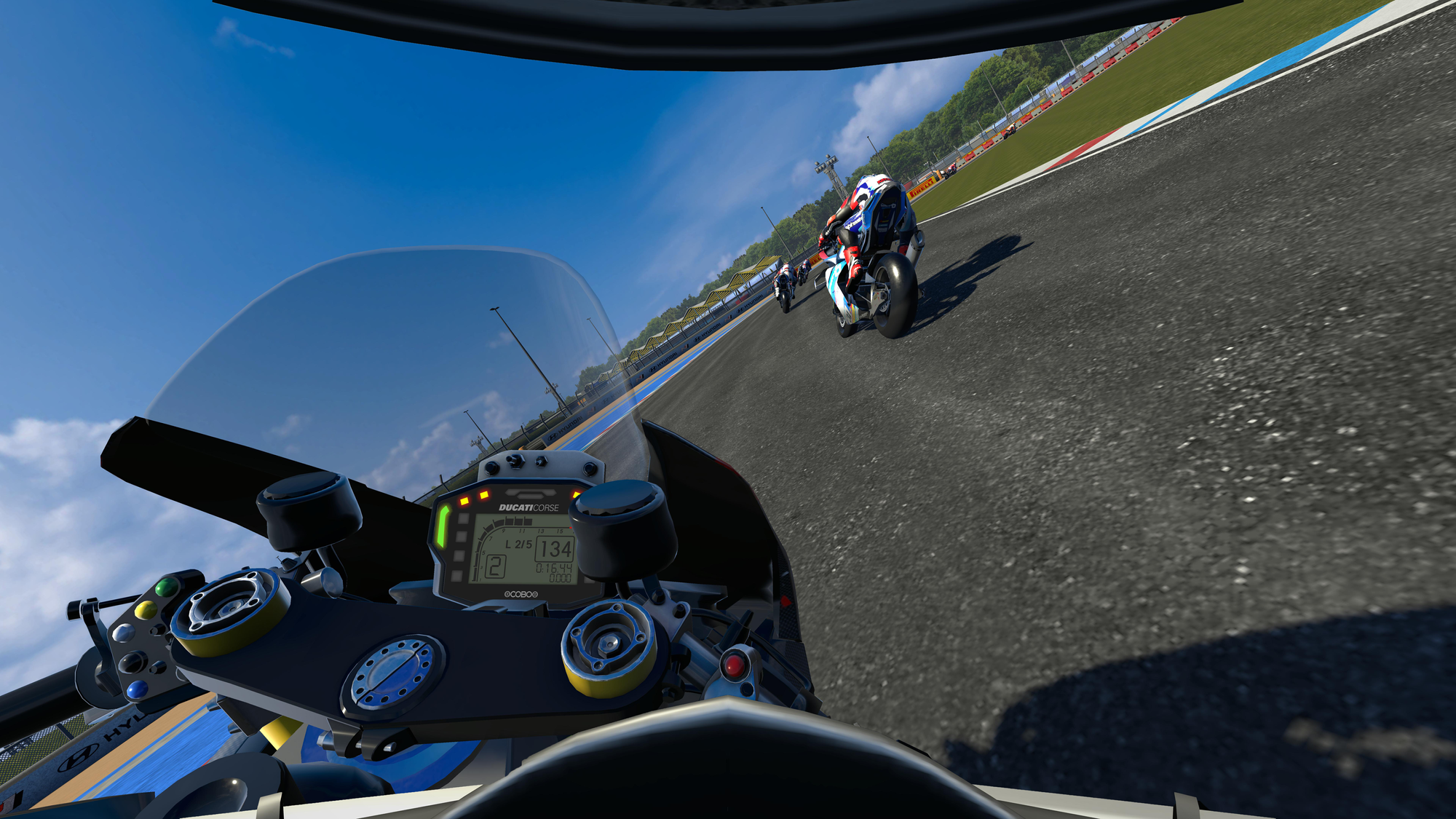VRIDER is an officially licensed Superbike World Championship VR game reaching Quest and Steam this year. Read on for our full impressions.
Developed by Funny Tales and published by VRAL Games, VRIDER mixes arcade and simulation racing elements. Offering solo play against AI racers, time trials, online multiplayer, and the ability to race “ghosts” of other players’ best laps, that comes with twelve circuits, all of the 2023 season’s racing teams, and five superbikes from Ducati, Kawasaki, Honda, Yamaha, and BMW.
When I first learned about VRIDER, I was intrigued. I’ve never driven a real-life motorbike, and the same can be said in VR. Between F1 23, GRID Legends, and Gran Turismo 7, I’m more accustomed to four wheels than two, but these experiences are often slightly limited. I’ve always wanted greater interactivity from the driver’s seat, something I found in V-Speedway and Neodori Infinity but rarely anywhere else.
After playing VRIDER at GDC 2024, what immediately stood out is how it doesn’t opt for standard joystick controls like many VR racing games use. You hold each Touch controller like grabbing a handlebar for steering, using the left trigger to brake and the right trigger to accelerate for pleasing interactivity. VRIDER also offers more realistic “twist” controls for accelerating and braking by twisting each controller, which is appreciated.

During my demo on Quest 3, I did two full races against another nine AI drivers and these controls mean there’s a learning curve that took getting used to. What’s particularly nice is how VRIDER tries mirroring driving a real-life motorbike beyond simply placing you on the bike in first person. Moving left and right offers more precise turning while ducking behind the windshield can increase acceleration. You can’t fall off the bike by leaning too far, but that doesn’t mean you can’t crash into walls or opponents.
Even in this preview build, VRIDER shows considerable polish and Funny Tales’ robust VR-first design approach beautifully plays to Quest’s immersive strengths. The sound design further enhances that, like hearing the wind as you move away from the center of the windshield. I’m also told the HUD can be toggleable, while more advanced optional settings for simulation fans include rear wheel traction or turning off the suggested racing line.
As for performance differences, VRAL Games CEO & co-founder Rodolfo Saccoman says the team has been “laser-focused on experience parity” between Quest 2 and 3. While the publisher didn’t confirm any specifics like refresh rates, I’m told Quest 3 owners can expect a higher framerate and more polished in-game graphics.

VRIDER reaches Quest App Lab soon, while the full Quest Store release is planned for Summer 2024. In early access, VRIDER will only contain solo content and half the tracks for a discounted price, and online multiplayer will not be available until the full release. A SteamVR version will follow in Q4 2024.




